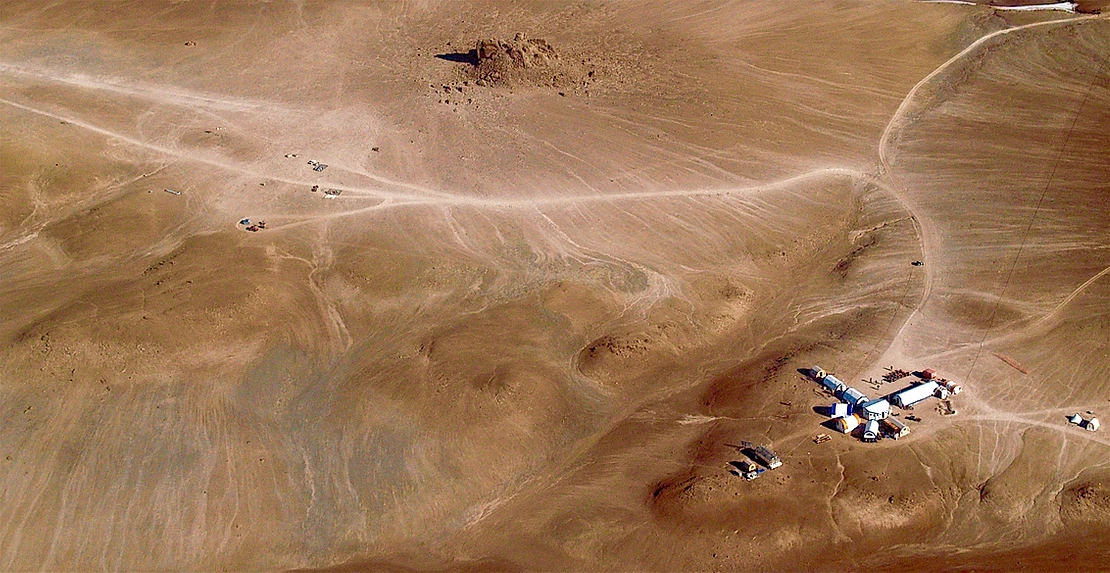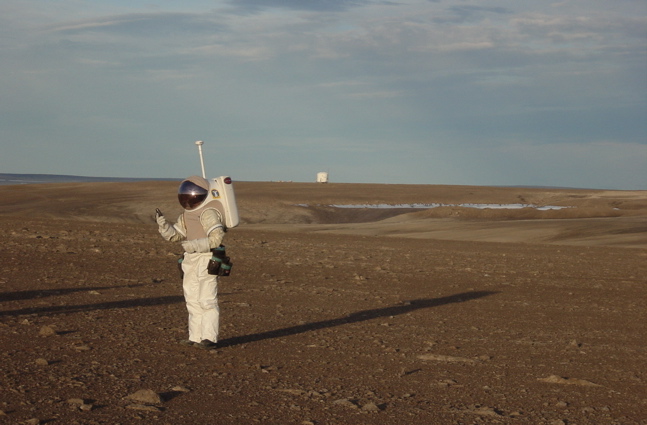Preparing for Mars… Right Here on Earth
Our interest in space exploration has stayed strong ever since we first walked on the Moon 50 years ago. Since the turn of the millennium, we’ve become more familiar with the idea of living in space, and more knowledgeable about it too. Our next adventures into space will most certainly involve the planet Mars.
A Canadian crater used as a training ground
There is a place on Devon Island, right here in Canada, in Nunavut more specifically, called the Haughton Crater, that has a number of Mars-like characteristics. It is located in an area known as a polar desert.

Devon Island’s Astronaut Canyon. Photo: NASA/Haugthon-Mars Project/Pascal Lee
Besides being a spectacular landscape, Astronaut Canyon lets researchers accurately simulate a number of environmental conditions found on Mars.

Left: Devon Island’s Astronaut Canyon. Right: The Mars canyon Ius Chasma. Astronaut Canyon has long ripple-like valleys similar to those found on Mars. They are like those near Ius Chasma and part of the gigantic network of Martian canyons known as Valles Marineris.
Photo: NASA/Mars Institute Haugthon-Mars Project
Its environment could be described as cold, dry, sterile, desolate, icy, rocky, dusty, windy, drenched in UV radiation, with vast plains and plateaus covered in boulder fields and ancient lake beds. Talk about a great Mars lookalike!

Simulation of an extravehicular scientific expedition in a dune field complete with spacesuits.
Photo: NASA/Haughton-Mars Project 2011/Mojave Field Test / Kira Lorber (colour)
This is why, in 1997, NASA chose to lead its Haughton-Mars pilot project here. This field research base is home to an ambitious international and multidisciplinary program whose partners include the Canadian Space Agency. One of the project’s goals is to explore simulations of what humans might encounter when they eventually explore Mars for themselves in the future.

Aerial view of the Haughton-Mars Project research base camp.
Photo: NASA/Haugthon-Mars Project
Is Astronaut Canyon exactly like it is on Mars? Well, no. Even if the crater has a terrain similar to what we might find on Mars, other aspects are much different. For one, gravity on Mars is much weaker than it is on Earth. Same goes for its atmospheric pressure. Plus, temperatures on Mars are extreme and can vary between minus 20°C and minus 153°C... not to mention the intense levels of radiation.
But the Haughton-Mars Project still let us develop, test, and validate key Mars exploration strategies that could eventually be used by humans and robots. The project has taken on spacesuit testing on vehicles designed to explore the surface of Mars with the help of aerial drones and robot rovers. Emergency medical systems and Martian agriculture tests are also being conducted to find ways to support potential future colonization of the Red Planet.

Dr. Jeff Jones testing a spacesuit designed for Mars exploration.
Photo: NASA/Haughton-Mars Project
Beware of Martian Sand
Thanks to tests performed in the Haughton Crater, researchers developed Mars rover designs that ensure they don’t sink in the sand. A simple enough problem, maybe, but without testing the rover designs on Earth, human explorers might have found themselves in danger once on Mars with their vehicles and wheeled robots completely out of commission from being stuck in the sand… without a tow truck in sight, the nearest one being more than 335 million km away!
The remote outback where the Haughton-Mars Project is based has also let the research team successfully perform telemedicine experiments where base camp members, none of whom had medical training, were able to take instructions remotely from physicians to perform emergency procedures on a robotic patient simulator.
Some of these procedures were quite complex and high-risk, including a leg amputation.
The Haughton-Mars Project team also needed a wide range of specialists to help improve the ergonomics and useability of spacesuits attached to the back of the Mars-1 Humvee rover. Thanks to their ingenious contributions over the years, these spacesuits have been tested and improved to produce versions that are pressurized precisely for future Mars explorers.

On the left, the access port where astronauts slide in and out of their spacesuit.
Photo: NASA/Haughton-Mars Project
This optimized suit design allows astronauts to leave the Mars-1 Humvee without compromising the interior of the vehicle with Martian dust or other contaminants. The design also helps them maximize space inside the vehicle since suits are stored on the outside. It also lets astronauts quickly and safely put on (and take off) their suit without coming into contact with the planet’s unfriendly atmosphere.
Space enthusiast? When you visit the Centre, don’t miss our Water in the universe zone! Explore a series of very unique objects from NASA, the Canadian Space Agency, and other Canadian organizations, including a lunar rock you can touch!